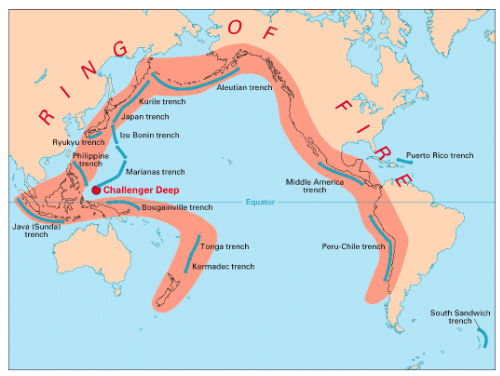December 2023 Current Affairs
Unveiling Renewable Energy Pledge Reality
In News: There is Reluctance of Leading Global Economies to Transition from Fossil Fuels.
Global Dynamics of Fossil Fuel Production and Consumption
- According to the International Energy Agency (IEA), the collective processes involved in fossil fuel production, transportation, and processing led to the emission of approximately 5.1 billion tonnes of CO2 in 2022.
- This accounted for nearly 15% of the total greenhouse gas emissions related to global energy activities.
- Additionally, this sector stands out as a significant source of methane emissions, contributing substantially to both climate change and air pollution.
Emission Reduction Goals
- In alignment with the IEA’s Net Zero by 2050 (NZE) scenario, there is a pressing need to reduce the emissions intensity of fossil fuel activities by approximately half by the close of this decade.
- This ambitious target aims for an overall 60% reduction in emissions from fossil fuel operations.
Major Players
- In 2022, key players in fossil fuel production included the United States, Saudi Arabia, Russia, Canada, and China.
- The OPEC alliance continued to exert influence as a formidable consortium of oil-producing nations.
- Notably, the United States claimed the top position as the world's primary producer of petroleum liquids, contributing a substantial 20% to global production.
Consumption Trends
- The leading consumers of fossil fuels in 2022 were the United States, China, India, Russia, Japan, Saudi Arabia, Brazil, South Korea, Canada, and Germany.
- These nations play pivotal roles in shaping the global landscape of fossil fuel consumption.
India’s Role in the Fossil Fuel Equation
- Current Dynamics
- India, ranking as the world's third-largest consumer of oil, remains deeply entrenched in industrial activities reliant on fossil fuels, with a daily consumption rate of around 5 million barrels.
- Notably, India's annual growth rate in oil demand hovers between 3-4%.
- Import Dependency Shifts
- India's import dependence on both oil and natural gas has witnessed a significant surge.
- The net import dependency for natural gas rose from just over 30% in 2012-13 to nearly 48% in 2021-22.
- A parallel trend is observed in crude oil imports, underlining an increasing external reliance.
Why Countries Hesitate to Restrict Fossil Fuel Production
- Economic Imperatives
- Fossil fuel production, encompassing oil and natural gas, often stands as a linchpin in a country's economic framework.
- It contributes substantially to government revenues, generates employment, and fuels overall economic expansion.
- Energy Security Concerns
- Essential for energy security, oil and natural gas are pivotal to ensuring a consistent and dependable energy supply.
- Countries prioritize increased production to meet domestic demand, fostering self-reliance and mitigating reliance on imports.
- Geopolitical Leverage
- Some nations strategically utilize energy production as a geopolitical tool, leveraging it to exert influence over other nations.
- This geopolitical dimension can complicate international efforts to control and restrict fossil fuel production.
- Domestic Political Dynamics
- Production decisions are intricately linked to domestic political considerations.
- Governments face challenges from diverse stakeholders, including industry groups, local communities, and political factions, influencing the complexities of production control efforts.
Strategies to Reduce Fossil Fuel Dependency
- Concrete Targets
- Developed nations, particularly those with significant resources, must take the lead by setting clear phase-out dates for all fossil fuel production.
- The elimination of new oil and gas investments is a critical step that requires urgent attention.
- Renewable Energy Innovation
- Countries should channel investments into research and development to accelerate advancements in renewable energy technologies.
- This includes funding for breakthrough innovations like next-generation solar panels, advanced wind turbines, and energy storage solutions.
- International Collaboration
- Global collaboration is essential, with countries joining forces in research, knowledge sharing, and collaborative initiatives.
- By pooling resources and sharing best practices, nations can expedite the development of innovative solutions for reducing fossil fuel consumption.
- Aid for Capacity Building
- Developed countries should extend support to developing nations in building their capacity for sustainable energy projects.
- Technical assistance, training programs, and knowledge sharing are vital components in fostering global energy sustainability.
- Green Industrialization
- Promoting the growth of green industries, such as renewable energy manufacturing, is crucial.
- This approach not only creates local job opportunities but also enhances energy self-sufficiency and reduces dependence on fossil fuel imports.
|
UPSC Previous Year Questions Prelims (2020) Q. With reference to furnace oil, consider the following statements:
Which of the statements given above are correct? (a) 1 and 2 only Ans: (d) Q.2 The term ‘West Texas Intermediate’, sometimes found in news, refers to a grade of (a) Crude oil Ans: (a) Mains (2017) Q. The question of India’s Energy Security constitutes the most important part of India’s economic progress. Analyse India’s energy policy cooperation with West Asian countries. |
Source: TH
Levy Taxes on 'HFSS' Foods: A Vital Move for Public Health
In News: According To a Recent Article High Fat Sugar Salt (HFSS) Foods Is a Leading Driver of Global Health Crisis, Triggering Obesity, Diabetes, and Hypertension.

Key Insights from the Global Burden of Diseases Study
- Global Health Crisis Trends
- In 2019, a World Bank report highlighted that a staggering 70% of overweight and obese individuals globally reside in Low- and Middle-Income Countries.
- Notably, the number of overweight or obese people in rural areas worldwide has surged by 55%, challenging the misconception that this health issue is confined to affluent nations and urban communities.
- Health Crisis and Economic Ramifications: The Case of India
- The burden of Non-Communicable Diseases (NCDs) in India has skyrocketed from 38% in 1990 to 65% in 2019.
- Alarming statistics from the global burden of diseases study attribute 1.2 million deaths annually in India to dietary risks alone.
- The economic impact of overweight and obesity in India, estimated at $23 billion in 2017, is projected to escalate to $480 billion by 2060 if unaddressed.
- Shift in Dietary Habits in India
- As the largest producer and consumer of sugar globally, India has witnessed a concerning growth in ultra-processed foods, compounding at an annual rate of 13.4% between 2011 and 2021.
- Approximately 50%-60% of edible sugar, salt, and fat produced in India are consumed by the processed food industry.
- The tripling of sales for snacks and soft drinks, surpassing $30 billion last year, indicates a disturbing trend in dietary habits.
- Implications of India’s Changing Dietary Landscape
- The surge in High Fat Sugar Salt (HFSS) food consumption in India is intricately linked to escalating chronic health conditions such as obesity, diabetes, and high blood pressure.
- This not only strains healthcare systems but also leads to soaring healthcare costs, impacting productivity and economic growth.
Global and Indian Strategies to Mitigate HFSS Food Implications
- Fiscal Measures: Taxation
- Globally, there is a growing trend of utilizing financial measures to address obesity. While taxes on sugary drinks are widespread, taxes on HFSS foods are less common but on the rise.
- Sixteen countries, including Denmark, France, Hungary, Mexico, South Africa, the United Kingdom, and the United States, have implemented dedicated taxes on HFSS foods.
- Colombia’s recent junk food law introduces a progressive levy on ultra-processed foods, offering a model for other nations.
- India's Efforts: The Need for Comprehensive HFSS Taxation
- Due to market failures and negative externalities, HFSS foods contribute to societal costs, especially in increased healthcare expenses.
- Implementing high taxes on HFSS foods can save additional societal costs and spending, discouraging harmful consumption habits.
- Taxes Can Shape Consumer Choices
- Consumers may lack a full understanding of the consequences of their choices due to aggressive marketing.
- Taxes can serve as a focused and effective means to discourage harmful consumption habits, successfully decreasing the purchase of unhealthy products.
- Inconsistencies in GST and Designing Effective HFSS Taxes
- Current Goods and Services Tax (GST) rates on ultra-processed foods lack consideration for nutritional content.
- An effective HFSS tax should apply a non-regressive and fiscally neutral approach, encouraging the industry to produce healthier products.
- Implementing differentiated tax rates based on nutritional quality can incentivize companies to improve offerings and promote healthier choices.
In Conclusion: HFSS Taxation as a Public Health Imperative
- HFSS taxation in India should be perceived not only as an economic or fiscal concern but as a critical public health imperative.
- When coupled with measures like promoting nutrition literacy and effective food labeling, HFSS taxation becomes a powerful tool to combat the escalating epidemic of overweight and obesity, fostering a more sustainable and equitable food system.
Source: TH
India's Ethanol Revolution: Advances and Hurdles
In News: The article explores the obstacles and possibilities associated with India's ethanol blending program, designed to diminish the nation's reliance on fossil fuels while fostering the adoption of renewable energy sources.

Understanding Ethanol
Ethanol, an organic compound, is a clear, flammable liquid with a distinct Odor. It is produced through sugar fermentation or chemical processes like ethylene hydration.
- Versatile Uses
- Ethanol finds applications in alcoholic beverages, biofuels blended with gasoline, industrial solvents, and medical and laboratory settings.
- It also serves as a chemical feedstock.
- Ethanol Blending Program (EBP)
- Initiated by the Indian government, the EBP promotes ethanol's use in petrol to reduce fossil fuel dependence.
- It aims to achieve 20% ethanol blending by 2025, contributing to energy self-reliance and environmental goals.
Significance of Ethanol Blending
- Reducing Fossil Fuel Dependence
- Curbs India's vulnerability to global oil market fluctuations.
- Fosters energy self-reliance and reduces oil imports.
- Environmental Impact
- Lowers carbon monoxide and hydrocarbon emissions, improving air quality.
- Supports climate goals with cleaner combustion.
- Agricultural Benefits
- Creates demand for crops used in ethanol production, supporting farmers.
- Boosts rural economies and enhances livelihoods.
- Energy Security
- Diversifies energy sources, reducing dependence on foreign oil.
- Strengthens India's energy security and resilience.
- Economic Advantages
- Stimulates job creation, investments, and innovations.
- Aligns with a sustainable and modern energy system.
- Vehicular Performance
- Improves engine performance due to higher octane rating.
- Reduces knocking tendencies in engines.
Challenges in Ethanol Blending
- Feedstock Challenges
- Varied availability and costs of feedstocks.
- Competition with food security concerns.
- Conversion Efficiency
- Efficiency and yield disparities based on feedstock and processes.
- Impact on economic viability and environmental sustainability.
- Infrastructure Hurdles
- Need for extensive infrastructure for transportation and storage.
- Ethanol's corrosiveness poses challenges in existing pipelines.
- Vehicle Compatibility
- Modifications required in engines for ethanol compatibility.
- Ethanol's lower energy density impacts transportation costs.
Government Initiatives
- Differential Ethanol Pricing
- Varied prices for ethanol derived from different sources.
- Annual revisions based on production costs, availability, and demand.
- Interest Subvention Scheme
- Facilitates setting up new distilleries through interest subvention.
- Encourages expansion of existing ethanol production units.
- Tax Relief
- Lower taxes on ethanol blends compared to unblended petrol.
- Encourages cost-competitive ethanol adoption.
- Incentives for E20-Compatible Vehicles
- Consideration of tax benefits for manufacturers and buyers.
- Promotes the development and usage of vehicles compatible with higher ethanol blends.
Future Strategies for Ethanol Program Enhancement
- Production Boost
- Diversify feedstock sources and support advanced biofuels.
- Encourage research in second and third-generation ethanol technologies.
- Policy and Market Mechanisms
- Gradually raise ethanol blending mandates.
- Establish long-term contracts with oil marketing companies.
- Technological Advancement
- Invest in infrastructure upgrades for efficient supply chain management.
- Collaborate with automobile manufacturers to develop ethanol-compatible engines.
- Public Awareness and Education
- Launch awareness campaigns to educate consumers.
- Ensure transparent labelling of ethanol-blended fuels at petrol stations.
Conclusion
India's Ethanol Blending Program has significantly contributed to energy security, reduced greenhouse gas emissions, and provided economic benefits. Continued efforts and strategic enhancements will propel India towards a more sustainable and self-reliant energy future.
|
UPSC Previous Year Questions Prelims (2010) Q. Given below are the names of four energy crops. Which one of them can be cultivated for ethanol? (a) Jatropha Ans: (b) Prelims (2020) Q. According to India’s National Policy on Biofuels, which of the following can be used as raw materials for the production of biofuels?
Select the correct answer using the code given below: (a) 1, 2, 5 and 6 only Ans: (a) |
Source: TH
Revolutionizing Indian Education
In News: The article highlights the education sector's crisis due to commercialization and politicization. It proposes a step-by-step strategy and a national consensus for a rebuild, free from narrow political influences.

Education in India: Current State and Challenges
Historical Overview
- In ancient India, the 'Gurukul' system fostered education with students living alongside their gurus.
- Nalanda, the world's oldest university, attracted learners globally.
- British-led reforms, like Macaulay Committee recommendations, shaped the colonial-era education system.
Present Landscape
- While the gender literacy gap has narrowed since 1991, India's female literacy rate lags behind the global average.
- Overall literacy stands at 74.04%, below the world average.
- Varied state literacy levels contribute to this disparity.
Legal and Constitutional Frameworks
- Legal provisions include the Right to Education Act's Sarva Shiksha Abhiyan for primary education, Rashtriya Madhyamik Shiksha Abhiyan for secondary education, and Rashtriya Uchhattar Shiksha Abhiyan for higher education.
- Constitutional amendments transformed elementary education into a fundamental right.
Issues in School Education
- Election-driven priorities, a crisis in the education sector, reliance on technology over quality investments, and the burgeoning tuition industry underscore challenges.
- Parents' preference for tuition centers widens the educational divide, impacting student mental health.
Quality Variance and Societal Involvement
- Quality variance in public and private schools, insufficient education spending, and a lack of societal involvement contribute to the sector's struggles.
- Infrastructural gaps persist, dropout rates remain high, and the educational system faces a widening divide between the rich and poor.
Long-Term Solutions
- Solutions entail an experiential learning approach, aligning with the National Education Policy, integrating vocational learning, reducing language barriers, and drawing inspiration from ancient education systems.
- Government initiatives, such as the National Programme on Technology Enhanced Learning, Samagra Shiksha Abhiyan, PRAGYATA, Mid Day Meal Scheme, Beti Bachao Beti Padhao, and PM SHRI Schools, aim to address these challenges.
Towards a Transformed Future
For a transformed future, there is a need to link artificial intelligence with education, implement the National Education Policy effectively, establish an education-employment corridor, and reduce the language barrier in education. Learning from ancient education systems can guide holistic development, emphasizing values and practical skills.
|
UPSC Previous Year Questions Prelims (2012) Q. Which of the following provisions of the Constitution does India have a bearing on Education?
Select the correct answer using the codes given below: (a) 1 and 2 only Ans- (d) Mains (2020) Q1. How have digital initiatives in India contributed to the functioning of the education system in the country? Elaborate on your answer. Mains (2021) Q2. Discuss the main objectives of Population Education and point out the measures to achieve them in India in detail. |
Source: IE
Addressing the Employment Challenge in India
In News: The article explores how India's employment challenge stems not only from the pandemic but also from the government's macroeconomic policies.
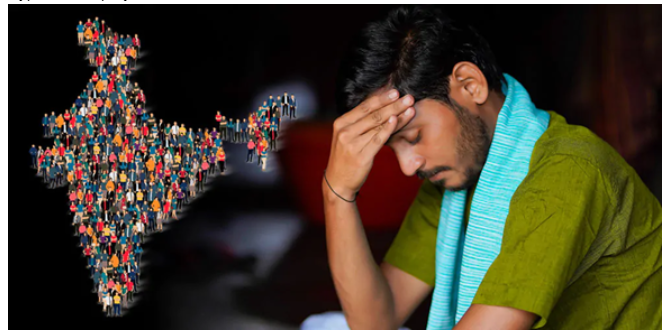
Types of Employment in India.
India's prevailing economic landscape features two primary types of employment:
- Wage Employment
- Regular Wage Jobs
- Formal positions in government organizations, private companies, and multinational corporations with fixed salaries.
- Casual or Daily Wage Labor
- Often found in sectors like construction, agriculture, and unorganized labour markets, characterized by variable income and job insecurity.
- Regular Wage Jobs
- Self-Employment
- Entrepreneurship
- Engagement in entrepreneurial activities, running small businesses or enterprises.
- Farmers
- Significant self-employment source, involving ownership and operation of farms.
- Freelancing and Informal Work
- Increasingly common in the gig economy, covering freelancers, consultants, and part-time roles.
- Entrepreneurship
Reasons behind Unemployment in India:
- Stagnant Employment Growth Rate
- Limited expansion in formal employment opportunities over the last four decades.
- Disguised Unemployment
- High levels of informal employment, including self-employed and casual wage workers, leading to disguised unemployment.
- Labour Demand Determinants
- Influenced by output demand and technology, with the introduction of labour-saving technologies reducing formal sector job opportunities.
- Policy Focus on Output Growth
- Traditional economic policies emphasizing GDP growth may not effectively address employment generation challenges.
- Lack of Responsiveness of Employment Growth Rate
- Disconnect between formal employment growth and changes in output growth rate, indicating jobless growth.
Jobless Growth in India:
- Weak Responsiveness of Employment to GDP Growth
- Jobless growth driven by automation and labour-saving technology, with the potential for increased employment through higher GDP growth
- High Responsiveness of Employment to GDP Growth
- India experiences a pronounced form of jobless growth due to the significant impact of labour-saving technologies on employment.
- Kaldor-Verdoorn Coefficient
- India's non-agricultural sector exhibits a higher Kaldor-Verdoorn coefficient, indicating a strong link between labour productivity and output growth.
Addressing Unemployment in India:
- Implement a National Employment Policy (NEP)
- Separate policy focus on employment alongside GDP growth, addressing both demand and supply components.
- Introduce an Urban Version of MGNREGA
- Urban employment safety net to create income security and public assets, modelled after the rural employment scheme.
- Increase Industrialization and Investment in Agriculture
- Rapid industrialization and increased agricultural investment to create more job opportunities.
- Diversify Agriculture and Promote Agro-Processing Industries
- Shift to horticulture, animal husbandry, and agro-processing for increased rural employment and income.
- Expand Education and Health Care
- Enhance human capital, generate employment, and improve competitiveness by expanding education and health care.
- Develop Rural Areas and Decentralize Development
- Rural development to reduce urban migration pressure, fostering more balanced growth and equitable distribution.
These measures aim to create a comprehensive strategy addressing various aspects of India's complex employment challenges.
|
UPSC Previous Year Questions Prelims (2013) Q. Disguised unemployment generally means (a) large number of people remain unemployed Ans: (c) Mains (2023) Q. Most of the unemployment in India is structural in nature. Examine the methodology adopted to compute unemployment in the country and suggest improvements. |
Source: TH
Evaluating Make in India: Successes and Obstacles
In News: The article examines the Make in India policy and its limitations, emphasizing the necessity for an Industrial Policy to address the unmet objective of job creation.
What is the Make in India Policy?
- The Make in India initiative, launched by the Indian government in 2014, aims to elevate domestic manufacturing and position India as a global manufacturing hub.
- The program focuses on attracting investment, fostering innovation, skill development, protecting intellectual property, and building top-notch manufacturing infrastructure.
Objectives
- Increase the manufacturing sector's growth rate to 12-14% per annum.
- Generate 100 million additional manufacturing jobs by 2025.
- Raise the manufacturing sector's contribution to GDP to 25% by 2025.
Strategies
- Streamlining Business Processes: Simplifying regulations to ease doing business in India.
- Developing Infrastructure: Upgrading ports, roads, railways, and power generation.
- Skilling the Workforce: Investing in skill development for the manufacturing sector.
- Incentivizing Investments: Providing tax breaks, subsidies, and incentives.
- Focusing on Key Sectors: Targeting specific sectors for development.
Derivatives
Make in India has derivatives like Made in India and Make for India, promoting products assembled or produced in India and manufacturing for the domestic market, respectively.
Rationale behind the Introduction of MII
- Launched in 2014, Make in India aimed to overcome constraints in the manufacturing sector, including inadequate infrastructure, regulatory complexities, and a shortage of skilled manpower.
- Its primary goals were to increase manufacturing's GDP contribution to at least 25% and create 100 million additional jobs.
Success and Failures of MII
Successes
- Improved ranking in the World Bank's Ease of Doing Business Index.
- Opened up various sectors to private and foreign investment.
- Growth observed in sectors like automobiles, electronics, and renewable energy.
- Leadership in mobile phone manufacturing.
Failures
- Failure to create an international niche market.
- Unmet targets for manufacturing sector share in GDP, job creation, and growth rate.
- Challenges including policy paralysis, lack of competitive advantage, and infrastructure bottlenecks.
Why did MII Fail to Achieve its Objectives?
- While the production-linked incentive (PLI) scheme aimed to attract investments and enhance efficiency, the primary goal of creating jobs, particularly in labor-intensive manufacturing, remained unaccomplished.
Can the MSMEs Solve the Jobs Conundrum?
- India's vast majority of micro, small, and medium enterprises (MSMEs) in the unorganized sector lack the flexibility for substantial job creation, pointing towards the need for a National Industrial Policy.
What Needs to be Done for Job Creation?
- A comprehensive National Industrial Policy is essential, especially for sectors like toys, garments, and footwear, to supplement the production-linked incentive (PLI) in promoting high-end manufacturing and mass job creation.
How can National Industrial Policy help in Job Creation?
- Providing incentives for industries to expand production, exports, and innovation.
- Developing infrastructure to facilitate efficient movement of goods and services.
- Enhancing workforce skills through education and training programs.
- Promoting entrepreneurship and innovation for startup growth.
- Aligning industrial policy with social and environmental goals.
Conclusion
A National Industrial Policy is crucial to generating productive employment opportunities in India, but the awaited new industrial policy (NIP '23) is currently on hold.
|
UPSC Previous Year Questions Mains (2017) Q. “Industrial growth rate has lagged behind in the overall growth of Gross-Domestic-Product (GDP) in the post-reform period.” Give reasons. How far are the recent changes in Industrial-Policy capable of increasing the industrial growth rate? |
Source: IE
Cultivating Harmony: Unleashing the Power of Natural Farming
In News: The article delves into the obstacles confronting natural farming and underscores the imperative of exploring alternative markets to advocate for and advance the cause of natural farming.
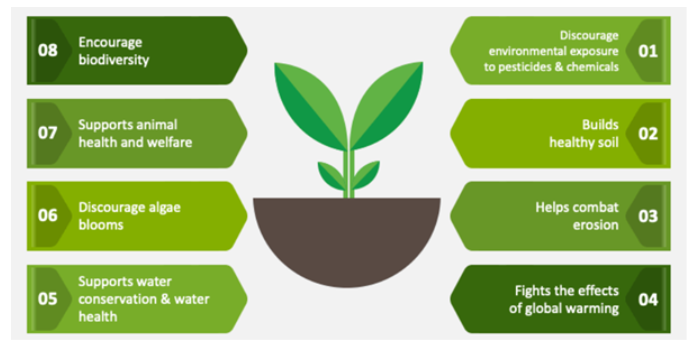
What is Natural Farming?
The Concept
Natural farming is a method devoid of chemicals, utilizing local resources and traditional practices. Rooted in agroecology, it integrates crops, trees, and livestock, incorporating beneficial microorganisms to enhance soil quality.
What are the Benefits of Natural Farming?
- Environmental Benefits
- Healthy Soil
- Techniques like composting foster soil fertility, improving water retention and nutrient availability.
- Water Conservation
- Methods like mulching and drip irrigation reduce soil moisture loss, crucial for sustainable water management.
- Reduced Pollution
- Substituting chemical inputs minimizes soil, water, and atmospheric pollution, safeguarding ecosystems and human health.
- Climate Change Mitigation
- Natural farming practices contribute to lower carbon footprints, with healthy soil acting as a carbon sink.
- Healthy Soil
- Farmer Benefits
- Reduced Costs
- Local resources and on-farm inputs lead to lower production costs, improving overall farmer profitability.
- Improved Farm Resilience
- Techniques promote soil health and biodiversity, enhancing farm stability against extreme weather events.
- Enhanced Farmer Health
- Eliminating exposure to harmful chemicals safeguards the well-being of farmers.
- Reduced Costs
- Consumer Benefits
- Safer Food
- Natural farming produces chemical-free food, ensuring safer consumption.
- Improved Food Quality
- Naturally grown food may have higher levels of beneficial nutrients, contributing to improved consumer health.
- Support for Sustainable Agriculture
- Choosing natural food indirectly supports a more sustainable and ethical agricultural system.
- Safer Food
What are the Challenges Related to Natural Farming?
- Limited Market
- Lack of differentiated markets and standards hinder farmers from obtaining premium prices for natural farming products.
- Lower Initial Yields
- Building healthy soil ecosystems takes time, resulting in lower yields initially compared to conventional methods.
- Lack of Awareness and Training
- Limited knowledge and access to training programs hinder farmers from adopting natural farming techniques.
- Availability and Affordability of Organic Inputs
- High costs of organic inputs discourage farmers from adopting natural farming practices.
- Pest and Disease Management
- Ecological methods for pest control may be less effective in the short term, requiring increased vigilance.
What Measures Should be Taken to Promote Natural Farming?
- Developing Alternative and Differentiated Markets
- Integrating NF produce into the Public Distribution System (PDS) ensures a stable market.
- Collaborating with Farmer Producer Organizations (FPOs) enhances production efficiency.
- Effective Implementation of Certification
- The Participatory Guarantee System (PGS-India) and self-certification tools like CETARA-NF ensure quality without third-party certification.
- Incentives and recognition are crucial for effective implementation.
- Developing Awareness
- Creating awareness among farmers and consumers is essential for transitioning to natural farming.
- Reliable certification can contribute to the growth of the niche market.
- Exploring Alternate Markets
- Integration of NF produce into the PDS, existing cooperative networks, mid-day meal programs, and dedicated haats can expand alternative markets.
- Consumer Cooperatives
- Establishing consumer cooperatives in urban/peri-urban areas supports the local procurement of NF produce.
- Developing Awareness
- Increasing awareness among farmers and consumers about the benefits of natural farming is critical for widespread adoption.
Conclusion
Promoting natural farming requires a comprehensive approach, encompassing market development, certification, awareness-building, and collaboration among stakeholders. Such measures can contribute to sustainable agriculture, benefitting farmers, consumers, and the environment.
|
UPSC Previous Year Questions Prelims (2021) Q. How is permaculture farming different from conventional chemical farming?
Select the correct answer using the code given below: (a) 1 and 3 Ans: (b) Prelims (2018) Q. With references to organic farming in India, consider the following statements:
Which of the statements given above is/are correct? (a) 1 and 2 only Ans: B Mains (2021) Q. What are the present challenges before crop diversification? How do emerging technologies provide an opportunity for crop diversification? Mains (2019) Q. How has India benefited from the contributions of Sir M. Visvesvaraya and Dr. M. S. Swaminathan in the fields of water engineering and agricultural science respectively? |
Source: BL
Does the evolving global order exhibit bipolar characteristics?
In News: Global disruptions, from China's rise to superpower competition, Russia's challenges in Europe, conflicts in West Asia, to the ascent of middle powers like India, prompt the question: Is the emerging global order bipolar?

Evidences of Emerging New Global Order
- China's phenomenal economic and military rise challenging established power dynamics.
- Russia's strategic realignment and deepening ties with China.
- India's ascent as a significant middle power influencing global affairs.
- Transition from traditional power structures to more interconnected and diffuse arrangements.
What is the New Global Order?
- Asymmetric bipolarity with the U.S. remaining a pre-eminent power while China rapidly closes in.
- Multipolar economic landscape accompanied by military unipolarity.
- Emergence of additional power centres contributing to a more complex global balance.
- The 21st century characterized by people's power, unprecedented connectivity, and interdependence.
Challenges in the New Global Order
- Complex relations between major players like the U.S., China, Russia, and India.
- Geopolitical competitions limiting manoeuvrability for middle powers.
- Ongoing wars in Eastern Europe and West Asia adding to global instability.
- The influence of military-industrial complexes and the spread of destructive weapons pose deeper challenges.
Way Forward in the Current Scenario
- Adaptation to shifting power dynamics is crucial for navigating global challenges.
- Strengthening comprehensive national power to effectively engage in the evolving geopolitical landscape.
- External balancing to perpetuate geopolitical dilemmas for major powers, enhancing strategic autonomy.
- Promotion of peace, tranquillity, and societal cohesiveness in border regions.
- Diversification of relationships, particularly in terms of energy, to bolster strategic autonomy.
- Focus on military modernization and disruptive technologies for heightened security preparedness.
- Transparent discussions and cooperation to address global issues and foster international stability.
- Investment in disaster management and peacekeeping initiatives to contribute globally.
- Diplomatic dialogues and collaboration to address climate change and security implications.
- Media literacy programs to educate the public about responsible consumption.
- Learning from international best practices while considering unique cultural and social contexts.
Source: TH
Empowering Rural Lives: Inclusive Development for Disabled
In News: There is a necessity for increased inclusive opportunities and employment in rural areas, given that the majority of individuals with disabilities reside in these regions.
Global Disability Scenario
- Scale of Disability
- Over 1.3 billion people globally, equivalent to nearly India's entire population, live with some form of disability.
- Global Economic Impact
- Inclusion of persons with disabilities in the economy can boost global GDP by 3% to 7%, according to ILO.
- Current Challenges
- Current systems designed for persons without disabilities result in exclusion, leading to poverty, limited education, and economic discrimination.
Disability Scenario in India
In India out of the 121 Cr population, 2.68 Cr persons are ‘disabled’ which is 2.21% of the total population.
|
Population, India 2011 |
Disabled persons, India 2011 |
||||
|
Persons |
Males |
Females |
Persons |
Males |
Females |
|
121.08 Cr |
62.32 Cr |
58.76Cr |
2.68 Cr |
1.5 Cr |
1.18 Cr |
Disability Scene in Rural India
Majority (69%) of the disabled population resided in rural areas (1.86 Cr disabled persons in rural areas and 0.81 Cr in urban areas). In the case of total population also, 69% are from rural areas while the remaining 31% resided in urban areas.
- Government Initiatives
- Central and State governments in India have various schemes and a UDID card for persons with disabilities.
- Awareness and Connectivity
- Awareness and last-mile connectivity challenges are acute, especially in rural areas.
- Unique Rural Challenges
- Rural areas face heightened challenges, including limited access to education and employment.
- Digital divide being one of the most major impediments for rural people with disability to get access to medica and healthcare facilities.
- Poverty and excessive dependence on agriculture sector which is a gamble due to unpredictable nature of monsoons.
Challenges Faced by Rural Disabled
- Limited Access
- Rural areas have more limited access to education and employment for persons with disabilities.
- Exclusion in Developmental Schemes
- Persons with disabilities in rural areas are sometimes excluded from developmental schemes.
- Attitudinal Barriers
- Viewed as objects of charity rather than individuals with agency and the ability to participate in decision-making.
Why Specially Abled People Should Be Encouraged?
- Economic Contribution
- Inclusion of persons with disabilities can boost the global economy. As per ILO this can boost the global economy by 3% to 7%
- Legal Framework
- Compliance with the UN Convention on the Rights of Persons with Disabilities requires a shift in attitudes and perceptions.
- Private Sector Role
- Private sector involvement is crucial for promoting employment of persons with disabilities.
Way Forward
- The SPARK Project
- Initiatives like the SPARK project demonstrate success in creating attitudinal shifts and promoting inclusion.
- Government Role
- Governments should prioritize awareness and last-mile connectivity, especially in rural areas.
- Private Sector Engagement
- Engaging employers' federations and trade unions is essential for successful inclusion efforts.
- Global Commitment
- A fundamental shift in commitment, solidarity, financing, and action is critical for prioritizing the needs of persons with disabilities on the global development agenda.
Source: TH
Enhancing the capacity of the Indian state
In News: It is pertinent to delves into the paradoxical nature of the Indian state, contending with the dual challenge of its expansive reach while encountering limitations in its capacity.
Comparing the Indian State with Others
- The scale of the Weberian state in India is notably compact.
- Within the G-20 group, it holds the distinction of having the fewest civil servants per capita.
- India's public sector's contribution to overall employment, standing at 5.77%, is only half of what is observed in Indonesia and China and approximately one-third of the figure in the United Kingdom.
- In terms of central government personnel, India trails significantly with approximately 1,600 per million, a stark contrast to the 7,500 in the United States.
- Moreover, across various professions—doctors, teachers, town planners, police, judges, firefighters, inspectors for food and drugs, and regulators—the per capita figures in India are the lowest even when compared to countries at a similar stage of development.
Challenges Facing the Indian State
- Outsourcing Services due to Inadequate State Capability
- The Indian state, with relatively small metrics like the tax-GDP and public expenditure-GDP ratios, faces challenges in providing public goods, welfare payments, and justice system services due to scarcity rather than surplus.
- As a result, essential services like primary health are often outsourced.
- Perverse Incentives and Skill Gap
- Perverse incentives within public institutions and a skill gap among officials hamper the ability of political executives and civil services to formulate and implement sound policies.
- Extreme Concentration of Powers
- Policy-making and implementation powers are extremely concentrated in India, fostering a culture of mistrust and reducing accountability for poor implementation due to restrictions on frontline personnel.
- Technocratic Gap
- Top policymakers lack technocratic skills to manage the complexities of an increasingly sophisticated economy.
- As a result, consultancy firms are frequently hired by the Centre and States to address economic, financial, and technical matters.
- Lack of Strength of Staff with Market Watchdogs
- Market watchdogs like SEBI and the RBI suffer from a shortage of professional staff.
- SEBI, for instance, has around 800 professionals compared to over 4,500 experts in the U.S. Securities and Exchange Commission.
- Weak Oversight and Audit Practices
- Narrowly scoped audits by the Comptroller and Auditor General of India, along with hindsight-based decision-making by oversight agencies like the Central Vigilance Commission and the Central Bureau of Investigation, lead to delayed procurement and contractual disputes.
- Problematic Appointment of Retired Officers
- The appointment of retired officers to regulatory bodies and tribunals poses challenges, making civil servants susceptible to political influence and compromising in-service decisions.
- Reduced Efficacy of the Public Sector
- The political economy of the public sector undermines its efficacy, with performance-linked pay and incentive schemes proving less effective than in the private sector.
- The disproportionately high public sector salaries, especially after Pay Commissions, contribute to corruption and make government jobs excessively lucrative.
The Path Forward
- Decouple Policymaking and Implementation
- Drawing lessons from countries like Australia, Malaysia, and the United Kingdom, segregating policymaking and implementation responsibilities accelerates execution and fosters innovation.
- The model of the National Highways Authority of India, where policy decisions are centralized, while execution is delegated, has proven effective in reducing delays and cost overruns.
- Delegate Financial and Administrative Powers
- Breaking the cycle of poor delegation and deficient state capability involves empowering frontline functionaries or street-level bureaucrats with clearly defined financial and administrative powers.
- This approach can enhance efficiency.
- Normalize the Lateral Entry Culture
- Incorporating a systematic and regular lateral entry mechanism at mid and senior levels can address the size and technocratic gap in civil services.
- Competent officers from non-IAS services should have equal opportunities for high-level positions, supported by subject-specific training under Mission Karmayogi.
- Sensitize Regulatory Agencies
- To curb the default mode of appealing against arbitration and court awards, oversight agencies need sensitization to understand the context of policy decisions.
- Factors such as the costs associated with actual decisions and their alternatives should be considered.
- Increase the Retirement Age
- Elevating the retirement age to 65 for all government jobs and establishing an absolute upper limit for appointments can mitigate susceptibility to political manipulation arising from the appointment of retired officers to regulatory bodies.
- Reform Public Sector Employment
- Ensuring that the public sector attracts intrinsically motivated individuals requires aligning risk and skill-adjusted pay with job security and better working conditions.
- Modest pay raises by future Pay Commissions and a reduction in the upper age limit for government jobs are potential solutions.
- Create Jobs in the Private Sector
- Promoting high economic growth to generate lucrative job opportunities in the private sector can diminish the allure of government jobs for financially motivated individuals.
- This shift has the potential to reduce corruption and attract socially-driven individuals to government service.
UPSC Previous Year Questions
Mains (2020)
Q. “Institutional quality is a crucial driver of economic performance”. In this context suggest reforms in the Civil Service for strengthening democracy.
Source: TH
Government Consultancy: Exploring Advantages and Disadvantages
In News: The consultancy firms wield excessive influence and power in shaping government decisions thus emphasizing the imperative for increased transparency and accountability.
Understanding Consultancy Firms
- Definition of Consultancy Firms
- Consultancy firms are businesses offering professional advice and solutions to organizations grappling with challenges beyond their immediate resolution.
- Expertise in Varied Fields
- These firms employ specialists in management, engineering, finance, healthcare, etc., providing services for a fee on specific projects or goals.
- Examples in India
- Prominent consultancy firms in India include Tata Consultancy Services, McKinsey & Company, and Deloitte.
Advantages of Consultancy Firms in Public Policy Making
- Specialized Knowledge
- Consultants bring domain-specific expertise crucial for effective program formulation in sectors like agriculture, transport, energy, and financial services.
- Flexibility and On-Demand Skills
- The dynamic nature of public policy challenges demands on-call, specialized technical skills provided by consultants.
- Diverse Perspectives
- External consultants contribute diverse skill sets and perspectives, enhancing problem-solving approaches for complex issues.
- Efficiency in Project-Specific Engagements
- Project-specific engagements offer a cost-effective and efficient solution for addressing specific government challenges without permanent increases in institutional load.
Challenges Posed by Consultancy Firms
- Depletion of Government Capabilities
- Heavy reliance on consultancy firms may lead to a decline in in-house government capabilities, making the government overly dependent on external expertise.
- Excessive Dependence and Mission Creep
- Government officials may become overly reliant on consulting teams, potentially expanding the scope of engagements beyond their original intent.
- Lobbying for Repeat Work and Policy Influence
- Consulting firms may exploit government connections for repeat work and attempt to influence policy decisions, raising concerns about accountability.
- Distortion of Public Policy Objectives
- Consultants' involvement in policy formulation may lead to misaligned priorities and recommendations that deviate from long-term public interests.
- Consultocracy and Diminishing Role of Public Servants
- The growing influence of consultants within government structures may diminish the traditional role of public servants.
- Risk of Corruption
- Collaboration between consulting firms and government activities may create opportunities for corruption, emphasizing the need for transparency and ethical practices.
The Way Forward
- Regulatory Safeguards
- Comprehensive regulations should ensure fairness and transparency in consultancy engagements, preventing rent-seeking behaviours.
- Disclosure of Value Added
- Mechanisms for consultants to disclose the value they add to public policy initiatives should be implemented for transparency, accountability, and public trust.
- Knowledge Transfer and Capacity Building
- Clear protocols for knowledge transfer from consultants to government officials should be established, emphasizing internal capacity building for long-term development.
- Stakeholders Involvement
- Engaging citizens and stakeholders through surveys and participatory methods ensures government policies are responsive, inclusive, and accountable.
Conclusion
While consulting firms play a vital role in modern governance, their involvement should be carefully regulated and transparent to enhance the quality and effectiveness of public service delivery.
|
UPSC Previous Year Questions Prelims (2008) Q. Which of the following are the public sector undertakings of the Government of India?
Select the correct answer using the code given below: Code: (a) 1 and 2 only Ans: d |
Source: IE
Exploring the Implicit Expenditures within Agrifood Systems
In News: In its publication, The State of Food and Agriculture 2023, the Food and Agriculture Organization
elucidates the concealed expenditures within our agrifood systems and examines their ramifications.
Unveiling the Unseen Expenses of Food and Agriculture
- Hidden expenses within agrifood systems encompass environmental outlays stemming from greenhouse gas and nitrogen emissions, water consumption, and land-use alterations.
- Additionally, health-related covert costs arise from diminished productivity due to unhealthy dietary habits, while social concealed costs emerge from the economic toll of poverty and productivity setbacks linked to undernourishment.
- The State of Food and Agriculture 2023 represents the inaugural effort by the FAO to evaluate these obscured costs on a national scale, encompassing 154 countries.
Key Global Insights from the Report
- The concealed costs of agrifood systems globally amounted to approximately 12.7 trillion dollars in 2020, measured at purchasing power parity (PPP), nearly constituting 10% of the world GDP in PPP terms.
- Dietary patterns contributing to obesity and non-communicable diseases (NCDs) were responsible for 73% of the global quantified hidden costs in 2020, leading to labor productivity losses.
- Environmental hidden costs from agriculture, comprising over 20% of the quantified hidden costs, equate to nearly one-third of agricultural value added.
- To lift the moderately poor working in agrifood systems above the moderate poverty line, it is estimated that incomes need to increase by 57% in low-income countries and 27% in lower-middle-income countries on the social front.
- These findings underscore the immediate necessity of incorporating these costs into decision-making processes for a transformative shift in agrifood systems.
Key Insights for India from the Report
- India's total hidden costs within agrifood systems reached approximately USD 1.1 trillion, ranking as the third-largest globally, following China and the United States.
- India's contribution accounted for 8.8% of the global quantified hidden costs of USD 12.7 trillion associated with agrifood systems.
- In comparison, China contributed 20%, and the United States contributed 12.3%, as outlined in the FAO's report.
- Within India, the largest share (60%) of hidden costs pertained to the burden of disease, indicating productivity losses due to dietary patterns.
- This was followed by the social cost of poverty among agrifood workers (14%) and the environmental cost associated with nitrogen emissions (13%).
- The report underscores the imperative to redirect support towards transforming agrifood systems, highlighting the importance of delivering healthy and environmentally sustainable diets to all.
Unveiling the Socio-Ecological Ramifications of Intensive Agricultural Practices in India
Impact on Society:
- Disruption of Indigenous Systems:
- The adoption of seeds from multinational corporations and the widespread use of fertilizers have undermined seed sovereignty, disrupted traditional knowledge systems, and shifted from diverse crops to mono-crop plantations.
- Traditional Farming Resilience:
- Conversely, traditional farming practices in India, exemplified by the Barahnaja crop diversification system in the Garhwal Himalayan region, involve cultivating 12 crops in a year, providing stability and aligning with natural processes.
- Rising Indebtedness:
- Privatization and deregulation of agricultural inputs have contributed to increased indebtedness among agrarian households, with the debt-to-asset ratio soaring by 630% between 1992 and 2013.
- Diminishing Agrarian Income:
- Agricultural viability in India has diminished significantly, reflected in the meager average monthly household income of farming households, which stands at ₹10,816.
Impact on Ecology:
- Soil Fertility Decline:
- Intensive farming practices, such as monoculture without adequate crop rotation, can deplete essential nutrients from the soil, impacting its fertility.
- Groundwater Over-Extraction:
- With heavy reliance on irrigation, agriculture in India has led to excessive groundwater extraction, resulting in adverse ecological consequences.
Impact on Health:
- Biodiversity Disruption:
- The expansion of rice and sugarcane cultivation contributes to biodiversity loss, increases pressure on groundwater resources, and contributes to air and water pollution.
Minimizing Hidden Costs in India's Agrifood Systems: A Forward Path
- Enhancing Crop Diversity
- Advocate for and implement crop diversification and rotation to boost soil fertility, mitigate pest risks, and enhance overall agricultural resilience.
- Climate-Resilient Crop Cultivation
- Integrate traditional agricultural wisdom with modern scientific approaches to identify and utilize crop varieties resilient to local climate conditions.
- For example, the dissemination of drought-tolerant maize varieties in sub-Saharan Africa has benefitted millions of smallholder farmers.
- Precision Irrigation
- Adopt precision irrigation techniques, such as drip and sprinkler systems, to maximize water use efficiency and minimize environmental impact.
- Variable Rate Fertilization
- Implement variable rate fertilization using soil testing, remote sensing, and precision agriculture technologies to tailor fertilizer application to specific crop and field requirements.
- Government Policy Reforms
- Initiate policy changes, including taxation, subsidies, and legislation, to mitigate hidden costs in agrifood systems.
|
UPSC Previous Year Questions Prelims (2020) Q. Which of the following factors/policies were affecting the price of rice in India in the recent Past?
Select the correct answer using the code given below: (a) 1, 2 and 4 only Ans: D Mains (2021) Q. What are the present challenges before crop diversification? How do emerging technologies provide an opportunity for crop diversification? |
Source: TH
Challenges of unemployment in India
In News: High unemployment poses a significant challenge in Chhattisgarh.
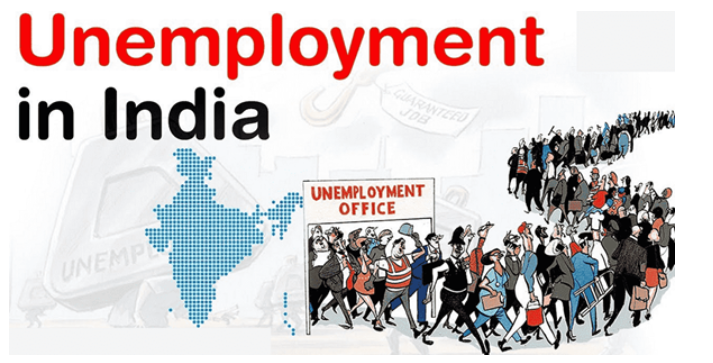
Understanding Unemployment
Definition
Unemployment refers to the condition where an individual actively seeking employment remains without work, serving as an indicator of the economic health of a nation.
NSO's Classification
The National Statistical Office (NSO) defines employment statuses, categorizing individuals as 'Employed' (engaged in economic activity), 'Unemployed' (seeking or available for work), or neither seeking nor available for work.
Labor Force and Unemployment Rate
The labour force comprises those working or actively seeking employment. The unemployment rate is calculated as the percentage of the labour force without work, employing the formula: (Unemployed Workers / Total labour force) × 100.
Types of Unemployment
- Disguised Unemployment
- More people employed than necessary, often observed in the agricultural and unorganized sectors in India.
- Seasonal Unemployment
- Occurs during specific seasons, impacting agricultural labourers with sporadic employment.
- Structural Unemployment
- Arises from a mismatch between available jobs and workers' skills, often linked to inadequate education and training.
- Cyclical Unemployment
- Tied to economic cycles, rising during recessions and decreasing with economic growth.
- Technological Unemployment
- Job loss due to technological advancements, with automation posing a significant threat.
- Frictional Unemployment
- Time lag between jobs when individuals are transitioning or searching for new employment.
- Vulnerable Employment
- Informal work without legal protection, prevalent in India's informal sector.
Major Causes of Unemployment in India
- Social Factors
- Caste-based restrictions and joint family dynamics can limit employment opportunities.
- Rapid Population Growth
- Constant population increase contributes to the unemployment challenge.
- Agricultural Dominance
- A significant portion of the workforce relies on agriculture, which is underdeveloped and seasonal.
- Decline in Cottage Industries
- Industrial development negatively impacted cottage and small industries, leading to unemployment.
- Labor Immobility
- Low mobility due to family ties and regional factors restricts job-seeking efforts.
- Education System Deficiencies
- Lack of specialized training and skills in India's education system hampers employability.
Government Initiatives to Combat Unemployment
- SMILE (Support for Marginalized Individuals for Livelihood and Enterprise)
- PM-DAKSH (Pradhan Mantri Dakshta Aur Kushalta Sampann Hitgrahi)
- MGNREGA (Mahatma Gandhi National Rural Employment Guarantee Act)
- PMKVY (Pradhan Mantri Kaushal Vikas Yojana)
- Start-Up India Scheme
- Rozgar Mela
|
UPSC Previous Year Questions Prelims (2013) Q. Disguised unemployment generally means (a) large number of people remain unemployed Ans: (c) |
Source: TH
Putting an End to Rhetoric on Air Pollution
In News: For a genuine commitment to combatting air pollution, the government should ensure that the matter is deliberated during the winter session of Parliament.
Decoding Air Pollution: Threats and Triggers for Health and Environment
Definition
Air pollution refers to the contamination of the atmosphere by substances that pose harm to human health, living oranisms, and the climate. These pollutants can also cause damage to materials. Common air pollutants include:
- Particulate Matter (PM10 and PM2.5)
- Tiny solid or liquid particles suspended in the air.
- Originates from natural sources like dust and human activities such as burning fossil fuels and industrial processes.
- PM2.5 poses higher health risks by penetrating deeper into the lungs and bloodstream.
- Ozone (O3)
- A gas formed when sunlight reacts with nitrogen oxides and volatile organic compounds (VOCs).
- Beneficial in the stratosphere for UV protection but harmful in the troposphere, causing respiratory issues.
- Nitrogen Dioxide (NO2)
- A gas resulting from the reaction of nitrogen oxides with oxygen.
- Emitted by combustion processes, including motor vehicles and industrial activities.
- Causes respiratory problems and contributes to ozone and particulate matter formation.
- Carbon Monoxide (CO)
- Colorless, odorless gas produced by incomplete combustion of carbon-containing fuels.
- Reduces oxygen supply to organs, leading to headaches, dizziness, and, at high levels, death.
- Sulfur Dioxide (SO2)
- Gas formed during the burning of sulfur-containing fuels.
- Causes irritation, breathing difficulties, and contributes to acid rain formation.
- Water Vapor
- Abundant greenhouse gas in the atmosphere.
- Not a direct pollutant but contributes to the greenhouse effect, amplifying the warming effect when interacting with other greenhouse gases.
Primary Causes of Air Pollution in India
- Vehicular Emissions
- In urban areas, vehicles contribute significantly to air pollution, constituting 40% of PM2.5 emissions in Delhi, according to the Centre for Science and Environment (CSE).
- Industrial Chimney Wastes
- Industries, especially in northern and eastern regions, are major contributors. In 2019, 139 out of 287 coal-based thermal power plants violated emission norms, emitting pollutants like sulfur dioxide, nitrogen oxides, and VOCs.
- Burning Fossil Fuels
- Power plants, factories, and households using coal, oil, or natural gas contribute to India being the third-largest CO2 emitter globally, as reported by the World Bank Group.
- Agricultural Activities
- Farming practices, including crop residue burning, fertilizer use, and livestock farming, contribute to air pollution. Crop burning alone accounted for 44% of Delhi’s PM2.5 concentration in November 2019.
- Indoor Air Pollution
- Biomass fuel usage for cooking in rural areas affects over 800 million people, emitting pollutants at concentrations five times higher than coal. This leads to health issues like lung infections and COPD.
- Burning of Garbage Waste
- Open burning of household waste releases toxic chemicals and dioxins into the air, contributing to diseases. Waste burning accounted for 29% of Delhi’s PM10 concentration in winter 2018.
- Slaughter Industry
- Methane emissions from ruminant animals, improper disposal of animal waste, and burning of carcasses contribute to greenhouse gas emissions. India’s slaughter industry generates vast amounts of solid waste and wastewater, often lacking proper waste management.
Challenges in Addressing Air Pollution
- Enforcement and Compliance
- Weak enforcement of existing regulations hampers efforts to prevent or penalize polluting activities.
- Financing and Incentives
- Inadequate financial support and incentives hinder the adoption of clean technologies and emission reduction practices.
- Public Awareness
- Low public awareness about the causes, effects, and solutions of air pollution poses a challenge.
- Capacity and Expertise
- Insufficient capacity and expertise among institutions and stakeholders limit the design and implementation of effective air pollution policies.
- Climate Adaptation
- Lack of resilience to changing climatic conditions and extreme weather events exacerbates air pollution challenges.
- Research and Innovation
- Insufficient research and innovation impede the development of evidence-based solutions for air pollution mitigation.
Strategies to Address Air Pollution
- Vertical Forests
- Skyscrapers covered with vegetation act as natural air purifiers, absorbing carbon dioxide and contributing to the city's aesthetics.
- Air Purifiers and Smog Towers
- Installing devices like air purifiers and smog towers can filter airborne particulates, enhancing air quality.
- Low-Carbon Technologies
- Promoting technologies such as solar panels, wind turbines, and electric vehicles reduces dependence on fossil fuels.
- Urban Green Spaces
- Developing parks, gardens, and rooftops enhances air quality, reduces heat island effect, and provides recreational benefits.
- Congestion Pricing and Low Emission Zones
- Implementing policies like congestion pricing and low emission zones encourages cleaner transportation alternatives.
- Biomass Briquettes/Pellets
- Utilizing biomass pellets as an efficient and affordable fuel source for rural households.
- Biomimicry
- Designing buildings and materials inspired by natural processes for air purification.
- Supporting Innovative Solutions
- Backing social enterprises and startups offering innovative air pollution solutions.
|
UPSC Previous Year Questions Prelims (2022) Q. Consider the following:
Excess of which of the above in the environment is/are the cause(s) of acid rain? (a) 1,2 and 3 Answer - (b) Mains Q. Mumbai, Delhi and Kolkata are the three mega cities of the country but the air pollution is much more serious problem in Delhi as compared to the other two. Why is this so? |
Source: TH
Challenges Confronting India in the South Asian Region
In News: The article explores the challenges and opportunities encountered by India in its neighbouring regions, particularly in light of evolving regional and global dynamics.
India's Conundrums in the Present Geopolitical Landscape
India encounters various challenges in its neighbouring regions, presenting distinct dilemmas that can be classified into three primary types:
- Political Challenges:
- Emergence of Anti-India Regimes:
- A significant dilemma revolves around the ascent of politically anti-India regimes in South Asia.
- Notably, the Maldives' new government has explicitly expressed an anti-India stance, requesting the withdrawal of Indian troops.
- Potential Ideological Shifts:
- The impending elections in Bangladesh, potentially leading to a Khaleda Zia-led government, introduce an additional layer to India's political challenges.
- The concern is that such a government might adopt an ideology that is unfavourable to India, complicating diplomatic ties and regional stability.
- Emergence of Anti-India Regimes:
- Structural Predicaments:
- Rising Chinese Influence:
- India grapples with structural dilemmas due to China's increasing influence in South Asia.
- The growing presence of China poses a challenge to India's regional dominance and influence, attracting nations seeking tangible benefits.
- This structural shift makes it challenging for India to effectively compete in meeting the material needs of its neighbours, potentially causing them to lean towards China.
- Rising Chinese Influence:
- Normative Quandaries:
- Changing Regional Dynamics:
- Traditionally, India has approached the region with normative and political considerations.
- However, the emergence of China as a non-normative alternative challenges India's conventional calculus.
- China's 'norms-free-zone' approach disrupts the dynamics of South Asian diplomacy, as states in the region may find it appealing to align with a power that does not impose normative conditions.
- Limited Alternatives:
- The absence of viable alternatives for South Asian states creates a dilemma. With China offering a non-normative alternative, India faces the challenge of adjusting its approach to accommodate the evolving dynamics in the region.
- This shift poses a challenge to India's historical dominance in setting norms and political expectations in its neighbourhood.
- Changing Regional Dynamics:
China's Distinctive Advantages Over India in Regional Dynamics
- Belt and Road Initiative (BRI) and Economic Influence
- China's active involvement in the Belt and Road Initiative (BRI) and other economic projects has led to increased connectivity and trade with smaller states in the region.
- The financial strength and commitment displayed by China in these initiatives give it a notable edge over India, as its deeper pockets enable a more substantial impact.
- Outreach to South Asian States
- China exhibits a proactive approach in reaching out to South Asian states, including those facing diplomatic challenges or crises.
- Notable examples include engagement with Taliban-led Afghanistan, military-ruled Myanmar, and crisis-hit Sri Lanka, contributing to a more significant overall impact compared to India.
- Border Dispute Resolution Strategy
- China's strategy of actively resolving border disputes with its neighbours, excluding India, serves to position itself as a reliable and cooperative partner in the region.
- While India also engages in efforts to resolve border issues, the focused approach and specific strategies employed by China contribute to its distinctive standing in regional geopolitics.
India's Dilemmas: Causes and Context
- Diminishing Presence of the United States
- The changing regional geopolitical landscape is marked by the reduced influence of the United States in South Asia.
- While the U.S. presence was not always beneficial for India, its absence has created a power vacuum, allowing China to step in and fill the void.
- Rise of China as a Geopolitical Buffer
- China's substantial rise as a major geopolitical player serves as a "geopolitical buffer" for smaller states in the region.
- The departure of the United States has prompted these states to strategically align themselves with China, utilizing the "China card" in foreign policy.
- Neighbours' Strategic Autonomy and China's Appeal
- Neighbouring states, desiring strategic autonomy, show a preference for asserting independence in their relationships, especially with India.
- However, when dealing with China, these states tend to leverage their relationships with both India and China, reflecting the challenge India faces in maintaining influence amid the strategic choices made by its neighbours.
Recommendations for India
- Engage Friendly External Actors
- Strengthen bilateral and multilateral ties with neighbours based on mutual respect, trust, and cooperation.
- Emphasize historical, cultural, and economic links, offering assistance in trade, connectivity, development, security, and disaster management.
- Strive to be a reliable and constructive partner rather than a domineering power.
- Flexible Diplomacy
- Adapt diplomacy to involve various stakeholders in neighbouring countries.
- Focus on reducing hostility instead of harbouring hatred towards anti-India elements.
- Engage with current leaders while remaining open to broader diplomatic outreach.
- Expand Diplomatic Personnel
- Invest in additional resources and personnel for diplomatic pursuits.
- Increase the number and quality of diplomats to represent India effectively.
- Enhance public diplomacy and cultural outreach to showcase achievements, diversity, and soft power, fostering people-to-people exchanges.
Source: TH
India's Sustainable Future: Embracing BioCNG for Green Energy
In News: Unlocking the Potential of Biogas for a Sustainable Economy: A Commentary as presented in recent writeup.

Harnessing the Potential of BioCNG for a Sustainable Future: Insights
Introduction to BioCNG
BioCNG, or biomethane, stands as a renewable and eco-friendly fuel derived from upgrading biogas to natural gas quality. The process involves purifying biogas extracted from organic waste materials like agricultural residues, food waste, and sewage sludge.
Advantages of BioCNG
- High Calorific Value
- BioCNG boasts a high calorific value, ensuring increased energy production per unit volume compared to other fuels, making it efficient and cost-effective for various applications.
- Environmental Friendliness
- As a clean fuel, BioCNG contributes to reduced air pollution by emitting lower levels of harmful substances such as carbon monoxide, nitrogen oxides, and particulate matter compared to conventional fuels.
- Residue-Free and Smokeless
- BioCNG combustion produces no residue or smoke, distinguishing it as a non-polluting fuel, offering environmental and health benefits.
- Economic Viability
- BioCNG production from locally sourced waste materials aids in cost savings related to transportation and storage.
- It also promotes job creation and income opportunities at the local level.
- Bio-Fertilizer Generation
- BioCNG production can yield bio-fertilizers, enhancing soil quality and crop yields.
- The organic fertilizers are derived from the slurry or digestate left after BioCNG production.
Government's Vision for BioCNG
- CBG Blending Obligation (CBO)
- The government has introduced a mandatory blending of Compressed Bio-Gas (CBG) in Compressed Natural Gas (CNG) and Piped Natural Gas (PNG) segments.
- This initiative aims to promote CBG production and consumption in the country, with a gradual increase in blending percentages.
- Implementation of CBO
- The National Biofuels Coordination Committee (NBCC) oversees the mandate's implementation.
- The Ministry of Petroleum and Natural Gas (MoPNG) provides financial assistance and support to City Gas Distribution (CGD) companies.
- CGD companies are responsible for blending CBG in their CNG and PNG networks.
- Objectives of CBO
- Stimulate CBG demand in the CGD sector.
- Reduce Liquefied Natural Gas (LNG) imports, leading to forex savings.
- Promote a circular economy and contribute to achieving net-zero emissions.
Challenges in Implementing CBG Blending Obligation
- Feedstock Availability
- Ensuring a consistent and adequate supply of raw materials poses challenges, with factors like seasonality, regional variations, and market conditions impacting feedstock procurement.
- Infrastructure and Technology
- Developing and deploying the necessary infrastructure and technology for CBG production, storage, and distribution requires significant investment and faces barriers related to entry, exit, and regulatory compliance.
- Stakeholder Coordination
- Effective collaboration among stakeholders in the CBG value chain, including farmers, entrepreneurs, investors, regulators, and consumers, is essential but may encounter hurdles related to coordination, transparency, and accountability.
- Awareness and Acceptance
- Despite government campaigns, gaining public and industry acceptance of CBG as a viable alternative may face challenges tied to perception, trust, and resistance to change.
Conclusion
While BioCNG holds immense potential for a sustainable future, addressing these challenges requires concerted efforts from all stakeholders, emphasizing the importance of aligning economic, environmental, and social considerations in the pursuit of a green economy.
|
UPSC Previous Year Questions Prelims (2019) Q .Consider the following:
Which of the above are released into the atmosphere due to the burning of crop/biomass residue? (a) 1 and 2 only Ans: (d) |
Source: BL
Analyzing the Supreme Court's Ruling on Article 370
In News: The recent judgment is a historic and groundbreaking decision that affirms the sovereignty and integrity of India and respects the desires of the people of Jammu and Kashmir.
Article 370: Background and Purpose
- Article 370 in the Indian constitution granted special status to the disputed region of Jammu and Kashmir, allowing it to have its own constitution, flag, and autonomy over most matters, excluding defense, foreign affairs, and communications.
- The article was added as a temporary provision in 1949 based on the terms of the Instrument of Accession signed by the ruler of Jammu and Kashmir, Hari Singh, in 1947.
Repealing Article 370: The Government's Approach
- Presidential Order
- In 2019, a Presidential order redefined the "constituent assembly of Jammu and Kashmir" to mean the "Legislative Assembly of Jammu and Kashmir," enabling the revocation of Article 370.
- Concurrent resolutions in both houses of Parliament were passed, and the Jammu and Kashmir Reorganisation Act, 2019, bifurcated the state into two Union Territories: Jammu and Kashmir, and Ladakh.
Supreme Court Verdict: Key Findings
- Article 370 as a Temporary Provision
- The Supreme Court determined that Article 370 was a temporary provision, serving a transitional purpose to establish a Constituent Assembly and facilitate Jammu and Kashmir's integration into the Union of India.
- Governor's Powers and Proclamations
- The court upheld the governor's proclamations, stating that the governor (President in J&K's case) can assume "all or any" roles of the state legislature, and such actions must be judicially tested only in extraordinary cases.
- Unilateral Power to Revoke
- The court ruled that the President, under Article 370(3), can unilaterally notify the cessation of Article 370 without requiring the concurrence of the State government.
- Validation of Jammu and Kashmir Reorganisation Act
- The court upheld the Jammu and Kashmir Reorganisation Act, 2019, validating the creation of the Union Territory of Ladakh and emphasizing that the State legislature's views on reorganization are recommendatory.
Reasons Behind Abrogating Article 370
- Integration and Development
- Article 370 hindered complete integration and development in Jammu and Kashmir, creating a sense of separatism.
- National Security
- Abrogation aimed to strengthen national security by curbing terrorism and separatism supported by Pakistan.
- Ending Discrimination
- The move sought to end discrimination against women, Dalits, and marginalized groups.
- Transparency and Accountability
- Article 370's repeal aimed to bring transparency and accountability to the governance of Jammu and Kashmir.
- Economic Prosperity
- The abrogation aimed to boost economic development, attract investment, and create jobs in the region.
Impact of Article 370 Abrogation
- Decline in Violence
- There has been a significant decrease in terrorist incidents, with security forces countering militant activities effectively.
- Improved Economic Development
- Initiatives like PMDP and IDS have spurred economic growth, job creation, and increased tax revenue.
- Enhanced Infrastructure
- Investments in infrastructure have led to improved connectivity within the region.
- Increased Tourism
- Improved security and marketing efforts have contributed to a surge in tourist numbers.
Conclusion
The recent Supreme Court verdict reinforces the principles of 'Ek Bharat, Shreshtha Bharat' and underscores the significance of unity and good governance. This decision reflects the court's commitment to strengthening the nation's fabric and upholding core societal values.
|
UPSC Previous Year Questions Prelims (2020) Q. Siachen Glacier is situated to the (a) East of Aksai Chin Ans: (d) Prelims (2008) Q. Which one of the following is the largest (area-wise) Lok Sabha constituency? (a) Kangra Ans: (b) Mains (2016) Q. To what extent is Article 370 of the Indian Constitution, bearing marginal note “Temporary provision with respect to the State of Jammu and Kashmir”, temporary? Discuss The future prospects of this provision in the context of Indian polity. Mains (2020) Q. Analyze internal security threats and transborder crimes along Myanmar, Bangladesh and Pakistan borders including Line of Control (LoC). Also discuss the role played by various security forces in this regard. Mains (2019) Q. The banning of ‘Jamaat-e-islaami’ in Jammu and Kashmir brought into focus the role of over-ground workers (OGWs) in assisting terrorist organizations. Examine the role played by OGWs in assisting terrorist organizations in insurgency affected areas. Discuss measures to neutralize the influence of OGWs. |
Source: TH
Decoding Reservations and Caste Dynamics
In News: The article contends that reservations serve as an essential corrective step to rectify historical injustices and discrimination experienced by specific communities, which might have deprived them of equal opportunities in the past.
Reservation System in India: An Overview
- Introduction
- The reservation system in India is rooted in the historical caste system, designed to provide specific sections of the population with access to government jobs, educational institutions, and legislative seats.
- This affirmative action, commonly known as positive discrimination, addresses the historical injustices faced by certain comunities due to their caste identity.
- Historical Genesis
- Originally conceived in 1882 by William Hunter and Jyotirao Phule, the formal caste-based reservation system emerged in 1933 with the introduction of the 'Communal Award' by British Prime Minister Ramsay Macdonald.
- Post-independence, reservations initially targeted Scheduled Castes (SCs) and Scheduled Tribes (STs).
- The Mandal Commission's recommendations in 1991 extended reservations to Other Backward Classes (OBCs).
- Recent Developments
- The Constitutional (103rd Amendment) Act of 2019 introduced 10% reservation for the "economically weaker sections" in the unreserved category, exceeding the 50% reservation cap.
Evolution of Reservation System in India
- Constitutional Framework
- Articles 15(4) and 16(4) of the Constitution empower the State and Central Governments to reserve seats for SCs and STs in government services.
- Amendments, including the 77th Amendment in 1995 and 85th Amendment in 2001, addressed reservation in promotions and consequential seniority.
- Legislative Representation
- Articles 330 and 332 provide reserved seats for SCs and STs in the Parliament and State Legislative Assemblies.
- Articles 243D and 243T extend reservation to Panchayats and Municipalities.
- Judicial Pronouncements
- Landmark cases, such as the State of Madras v. Smt. Champakam Dorairajan (1951) and Indra Sawhney v. Union of India (1992), shaped reservation policies.
- The M. Nagaraj v. Union of India (2006) case established criteria for constitutionally valid reservation policies.
Need for Reservation in India
- Addressing Historical Discrimination
- Reservation seeks to rectify historical injustices and provide opportunities to communities historically marginalized due to caste-based discrimination.
- Lack of Human Development Indicators
- Disparities in education, employment, and access to resources among caste groups highlight the need for reservation to bridge these gaps.
- Promoting Social Justice
- Articles 15(4) and 16(4) reflect a constitutional commitment to promoting social justice and equality through reservation in education and public employment.
- Prevalence of Backwardness
- Recommendations of the Mandal Commission addressed the backwardness of OBCs, ensuring a more inclusive approach to reservations.
- Data and Government Reports
- Socio-economic census data, government reports like the Sachar Committee Report, and NSSO reports justify reservations by revealing disparities and backwardness in specific communities.
- Equitable Representation
- Reservation in government jobs ensures representation from all sections of society, promoting diversity and inclusivity in public services.
Issues with Reservation System in India
- Quality of Education and Employment
- Concerns exist that reservation policies may compromise the quality of education and workforce by focusing on quotas rather than merit.
- Brain Drain
- Reservation policies might contribute to a "brain drain," where talented individuals seek opportunities abroad to avoid the reservation system.
- Resentment and Division
- Reservation can create social and economic divisions, fostering resentment among those not benefiting from the policies.
- Inefficiencies and Corruption
- Issues of inefficiency, corruption, and caste certificate manipulation undermine the effectiveness of the reservation system.
- Ghost Beneficiaries
- Broad categories may not accurately target the most disadvantaged individuals, leading to inefficiencies in reaching the intended beneficiaries.
- Stigma and Stereotyping
- Reservation may result in stigmatization and stereotyping, impacting the self-esteem of individuals from reserved categories.
- Economic vs. Social Development
- While addressing social development, reservation policies may not directly tackle economic disparities.
- Political Exploitation
- Reservation policies are sometimes politically exploited, focusing on short-term gains rather than long-term development.
Potential Solutions to Reservation Challenges
- Reboot Infrastructure of Opportunity
- Focusing on education, employability, and employment reforms can accelerate progress by addressing performance management, governance, and skills development.
- Equal Treatment
- Ensuring fair treatment and avoiding discrimination based on background promotes equality.
- Unbiased Competition
- Encouraging competition on a level playing field fosters excellence based on skills and efforts.
- Impartially Judged Outcomes
- Evaluation based on merit, performance, and contributions ensures fair and impartial outcomes.
- Judging Based on Effort and Courage
- Emphasizing hard work, determination, and the courage to pursue goals promotes individual responsibility.
- Judicious Resource Use
- Efficient utilization of resources for subsidized food, education, healthcare, and housing must be balanced with individual responsibility.
Conclusion
- Philosophical Reflection
- Rooted in Gandhiji's vision of Sarvodaya through Antyodaya, the reservation system is a tool for social justice.
- However, there's a call to move beyond political manipulations toward a more universal approach.
- Call for Change
- After years of striving for Poorna Swaraj, it's time to reconsider reservation, often subject to political maneuvers, for a more universally applicable system over the next few decades.
|
UPSC Previous Year Questions Mains (2018) Q. Whether the National Commission for Scheduled Castes (NCSC) can enforce the implementation of constitutional reservation for the Scheduled Castes in the religious minority institutions? Examine. |
Source: IE
Understanding the Forest Rights Act of 2006
In News: Recently an article discusses the obstacles and deficiencies encountered in the execution of the Forest Rights Act within the context of India.
Understanding Forest Rights Act, 2006: A Comprehensive Overview
The Forest Rights Act, 2006, acknowledges and vests forest rights and occupation in Forest Dwelling Scheduled Tribes (FDST) and Other Traditional Forest Dwellers (OTFD) who have generational ties to such forests. It addresses the conservation of forests while safeguarding the livelihood and food security of FDST and OTFD.
Key Provisions of the Act: Unravelling Rights and Responsibilities
- Recognition Criteria
- The Act allows recognition of forest rights for those residing in forest land for at least three generations before December 13, 2005, meeting bona fide livelihood needs.
- Types of Rights Recognized
- It identifies four types of rights—Title rights, use rights, Relief and development rights, and Forest management rights, aiming to balance ownership, utilization, rehabilitation, and conservation.
- Gram Sabha's Role
- The Gram Sabha plays a crucial role in initiating the process of determining Individual Forest Rights (IFR) or Community Forest Rights (CFR) for FDST and OTFD.
The Genesis of Forest Rights Act: Unravelling Historical Injustices
- Pre-Colonial Era
- Local communities traditionally held rights over forests in their regions, even when rulers claimed specific hunting rights.
- Shifting cultivation was practiced, and communities had access to forest benefits.
- Colonial Era Injustices
- The introduction of the Indian Forest Act in 1878 marked a shift in forest policies, favouring timber extraction.
- Colonial injustices included bans on shifting cultivation, creation of 'Forest Villages,' limited access to forest produce, and forceful displacements.
- Post-Independence Era Challenges
- Post-Independence, forest areas were declared state property, displacing communities labelled as 'encroachers.'
- Wildlife and Forest Acts further led to forceful relocations, undermining local opinions and compensation for development impacts.
Role of Forest Rights Act, 2006: Addressing Historical Injustices
- Individual Forest Rights (IFRs)
- The Act acknowledges 'encroachments' as legitimate habitation and cultivation, granting IFRs to continue these activities.
- Community Forest Rights (CFRs)
- Recognition of village communities' rights to access, use, and manage forests within customary boundaries, challenging the historical dominance of the forest bureaucracy.
- Decentralized Forest Governance
- The Act establishes democratic procedures for balancing wildlife conservation and community rights, ensuring a say in forest management.
Implementation Challenges and Concerns: Navigating Roadblocks
- Individual Rights vs. Community Rights: Divergent Focus in Implementation
- Politically Skewed Focus
- Some states prioritize individual rights, neglecting the vital recognition and protection of community rights essential for sustainable forest management.
- Politically Skewed Focus
- Digital Processes in Areas with Poor Connectivity: Technological Hurdles
- Challenges in Implementation
- Digital processes face challenges in areas with poor connectivity and low literacy rates, hindering effective filing and processing of claims.
- Challenges in Implementation
- Incomplete Recognition of Community Forest Rights (CFRs): A Significant Gap
- Slow Progress in CFR Recognition
- The incomplete recognition of community rights poses a significant gap in FRA implementation, with resistance from the forest bureaucracy hindering empowerment.
- Slow Progress in CFR Recognition
- Forest Villages Not Addressed: Inadequate Solutions
- Neglected 'Forest Villages'
- The issue of 'forest villages' lacks comprehensive solutions in most states, indicating incomplete implementation efforts.
- Neglected 'Forest Villages'
Strategies for Moving Forward: Charting a Progressive Path
- Empowerment of Gram Sabha
- Actively involve the Gram Sabha in decision-making processes related to forest management, ensuring local self-governance participation.
- Inclusive Decision-Making
- Include rights holders in decision-making processes to consider their perspectives and needs, fostering inclusivity.
- Education and Training
- Conduct awareness programs and training sessions for forest dwellers to inform them about their rights under the FRA.
- Capacity Building
- Strengthen the capacity of civil society organizations to support and advocate for the rights of forest dwellers.
- Monitoring Mechanisms
- Establish monitoring systems to ensure adherence to the provisions and objectives of the FRA by relevant authorities.
- Accountability Measures
- Implement accountability measures for violations or non-compliance with the FRA, holding responsible authorities accountable.
- Integrated Planning
- Develop integrated plans considering both development and conservation needs, respecting the rights and interests of forest dwellers.
- Consultative Processes
- Engage in consultative processes involving all stakeholders to strike a balance between development and conservation goals.
Conclusion: Navigating Challenges for a Sustainable Future
Despite some states making progress, comprehensive understanding and endorsement of the FRA's essence are crucial. Without this, past injustices persist, forest governance lacks democracy, and community-led conservation and sustainable livelihoods remain unrealized.
|
UPSC Previous Year Questions Prelims (2021) Q. Consider the following statements:
Which of the statements given above are correct? (a) 1, 2, 4 and 5 Ans: (b) Q. At the national level, which ministry is the nodal agency to ensure effective implementation of the Scheduled Tribes and Other Traditional Forest Dwellers (Recognition of Forest Rights) Act, 2006? (a) Ministry of Environment, Forest and Climate Change Ans: (d) |
Source: TH
Revealing Left Wing Extremism in India
In News: Recently an article contends that effective implementation of PESA can empower tribal communities to engage in the planning and execution of development initiatives, promote social justice, and safeguard their rights and resources.

Understanding Left Wing Extremism in India
- Introduction
- Left-wing extremism, characterized by radical ideologies and revolutionary means, traces its origin to the 1967 Naxalbari uprising in West Bengal.
- This phenomenon affects 90 districts in 10 states, with varying degrees of impact.
Factors Behind Left Wing Extremism
- Inequitable Development
- LWE areas suffer from high poverty, unemployment, illiteracy, malnutrition, and social exclusion.
- Exploitation of grievances among marginalized communities, especially tribals, deprived of land and resources.
- Governance Deficit
- Weak, corrupt, or absent governance in LWE areas creates a vacuum filled by extremist groups.
- Disruption of democratic processes through violence and intimidation.
- Ideological Appeal
- LWE groups reject parliamentary democracy, advocating armed revolution.
- Draw inspiration from Mao Zedong and the Naxalbari uprising.
- Globalization and Cultural Displacement
- Globalization's impacts contribute to dislocation and alienation.
- LWE movements provide identity and purpose amid cultural changes.
Government Initiatives
- Security Measures
- Deployment of Central Armed Police Forces (CAPFs).
- Strengthening state police and establishing specialized units.
- Development Initiatives
- Integrated projects for infrastructure, livelihood, and basic needs.
- Skill development and sustainable livelihood programs.
- Ensuring Rights and Entitlements
- Addressing land and forest rights through legislation.
- Grievance redressal mechanisms and empowerment of local communities.
- Other Measures
- Civic Action Program (CAP) for community engagement.
- Surrender and Rehabilitation Policy.
- SMART Police strategy for data-driven policing.
Impact of Measures
Significant reduction in LWE violence and geographical spread over the past eight years.
Future Recommendations
- Effective Implementation of PESA Act
- Ensure complete PESA implementation.
- Address gaps exploited by Maoists.
- Tribal Empowerment and Representation
- Increase tribal representation in local governance.
- Acknowledge and address tribal aspirations.
- Development Programs
- Implement targeted socio-economic development programs.
- Ensure participatory development initiatives.
- Counter Maoist Propaganda
- Launch communication strategies to counter propaganda.
- Collaborate with local media and influencers.
- Negotiation and Conflict Resolution
- Explore peaceful negotiation with moderate factions.
- Involve neutral mediators in peacebuilding.
- Human Rights Protection
- Ensure protection of human rights in conflict zones.
- Minimize collateral damage and civilian casualties.
- Long-term Strategic Planning
- Develop a comprehensive, long-term strategy for sustainable development.
- Focus on social justice and inclusive governance.
Conclusion
Government efforts, including security measures and development initiatives, show progress in curbing Left-wing extremism. Continued strategic planning and addressing root causes are crucial for lasting eradication.
|
UPSC Previous Year Questions Mains (2020) Q. What are the determinants of left-wing extremism in Eastern part of India? What strategy should the Government of India, civil administration and security forces adopt to counter the threat in the affected areas? Mains (2015) Q. The persisting drives of the government for development of large industries in backward areas have resulted in isolating the tribal population and the farmers who face multiple displacements. With Malkangiri and Naxalbari foci, discuss the corrective strategies needed to win the Left-Wing Extremism (LWE) doctrine that affected citizens back into the mainstream of social and economic growth. |
Source: TH
Slovenia
In News: 23rd meeting (COP 23) of Barcelona Convention took place in Slovenia.
Green transition in the Mediterranean: from decisions to actions
Moving from plans and programmes to concrete actions to ensure a prosperous and sustainable Mediterranean.
This goal can be achieved by strengthening:
- River Basin Management, Integrated Coastal Zone Management and Maritime Spatial Planning: engaging citizens in environmental issues and decision-making processes.
- Transboundary, regional and interregional cooperation in the Mediterranean, the Black Sea and the Danube River Basin.
- Inter-generational cooperation: involving youth in the activities of local, national and regional institutions and environmental programmes.
- Climate change adaptation policies and plans developed from national to local level (top-down and bottom-up).
- Global framework for implementation of Barcelona Convention, focusing on climate change, biodiversity and protection of oceans.
Things to Remember
About Slovenia
- Slovenia is a European country located in Central Europe, bordered by Italy to the west, Austria to the north, Hungary to the northeast, and Croatia to the south and southeast.
- Slovenia's diverse landscape includes the Julian Alps, forests, lakes, and a small coastline along the Adriatic Sea.
- The climate varies from Alpine in the north to Mediterranean on the coast, with continental influences in the interior.
- The country is known for its high-quality wines, agriculture, and traditional crafts.
Important River
- The Sava is a river in Central and Southeast Europe, a right-bank and the longest tributary of the Danube. It flows through Slovenia, Croatia and along its border with Bosnia and Herzegovina, and finally through Serbia, feeding into the Danube in its capital, Belgrade.
Country Share Border with Adriatic Sea
- Albania, Bosnia and Herzegovina, Croatia, Italy, Montenegro, and Slovenia.
- It extends from the Gulf of Venice south to the Strait of Otranto, linking it to the Ionian Sea.
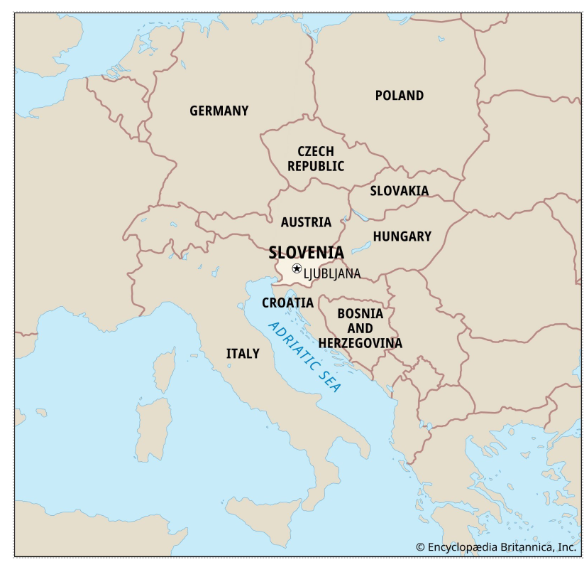
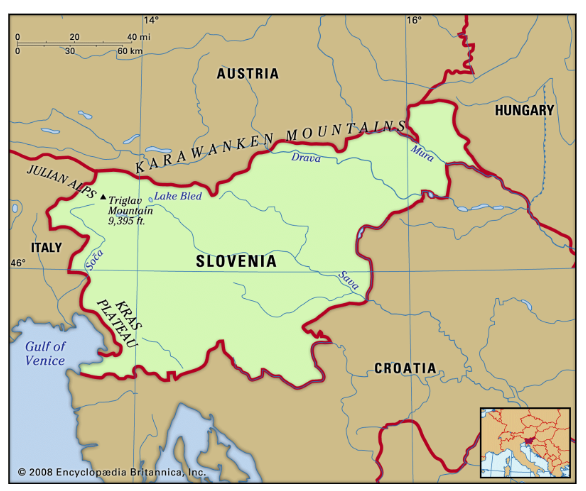
Peru
In News: Peru has lost more than half of its glacier surface in last six decades.
Location: Peru is a country in western South America. It lies wholly in the Southern Hemisphere.
Borders: It is bordered in the north by Ecuador and Colombia, in the east by Brazil, in the southeast by Bolivia, in the south by Chile, and in the south and west by the Pacific Ocean.
Water bodies: The endorheic basin of Lake Titicaca, and the Amazon basin in this region empties into the Atlantic Ocean.
Climate: The combination of tropical latitude, mountain ranges and two ocean currents (Humboldt and El Niño) gives Peru a large diversity of climates. Coastal region has moderate temperatures, low precipitation, and high humidity, except for its warmer, wetter northern reaches.
4% of world fresh water.

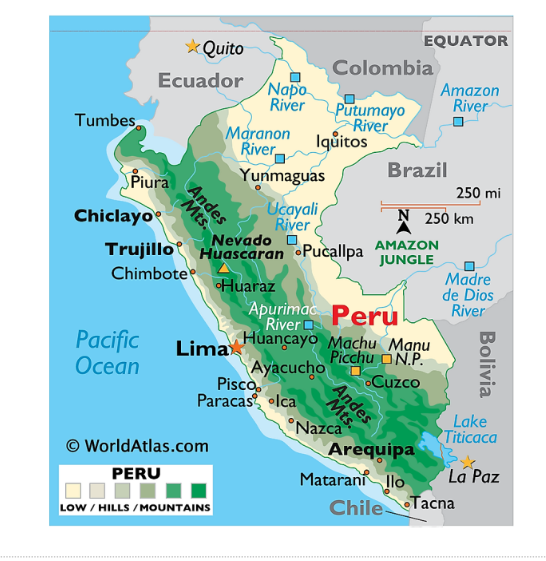
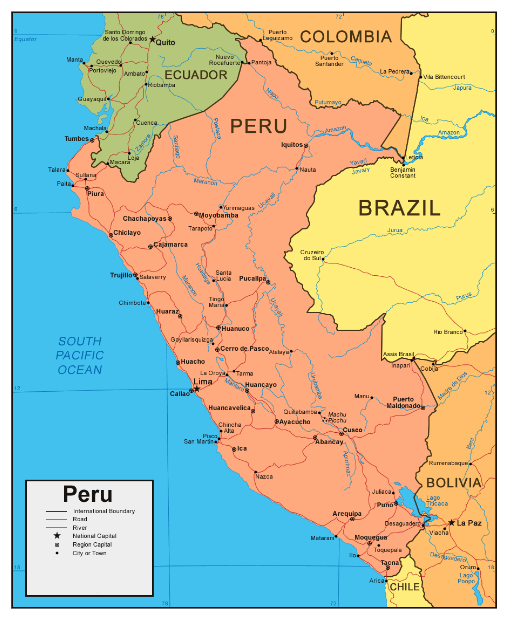
Guyana - Edukemy Current Affairs
In News: Venezuela Guyana saw tensions over a border dispute around the Essequibo river, and an offshore area
Things to Remember
- Georgetown
- Essequibo river
- Courantyne River
- Bartica
- Lethem
- Liza Field
- Kaieteur falls
Border Sharing Country
- Guyana is bordered by the Atlantic Ocean to the north, by Suriname (along the Courantyne River) to the east, by Brazil to the south and southwest, and by Venezuela to the west.
- Venezuela is bounded by the Caribbean Sea and the Atlantic Ocean to the north, Guyana to the east, Brazil to the south, and Colombia to the southwest and west.

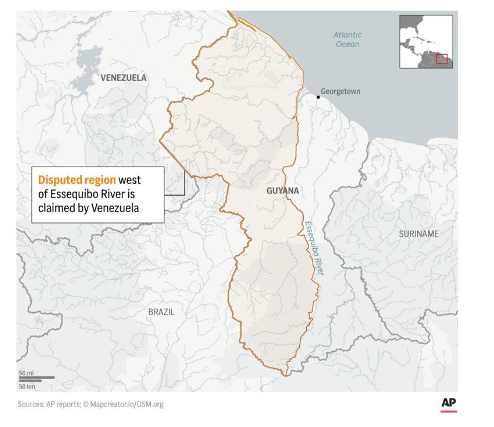
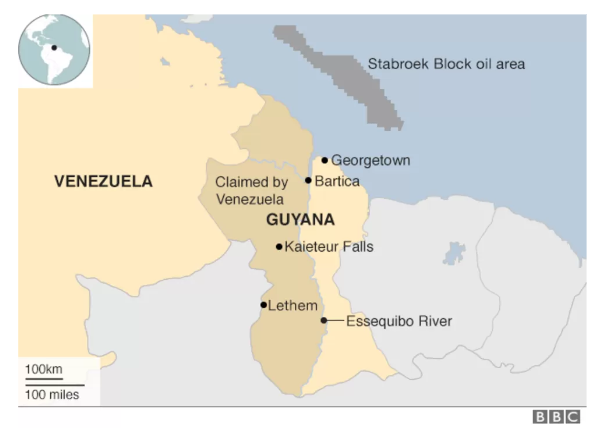

Cyprus - Edukemy Current Affairs
In News: Cyprus won cheese trademark case against Indian Company
Things to remember
- United Nation Buffer Zone
- Global offshore investigation, conducted in collaboration with the International Consortium of Investigative Journalists (ICIJ), exposes the use of Cyprus as a tax haven by the rich and powerful from around the world.
- DTAA between India and Cyprus
|
Key Facts About Cyprus
- Cyprus is an island country in the Eastern Mediterranean Sea, with an area of about 9,251 square kilometers.
- It is the third-largest and third-most populous island in the Mediterranean, with a population of about 1.2 million people.
- Capital: Nicosia
- Cyprus has been a member of the European Union since 2004.
- Cyprus has a pleasant Mediterranean climate, with hot summers and mild winters.
- Cyprus is physically divided with the southern part ruled by the internationally-recognised government and the northern part controlled by Turkey.
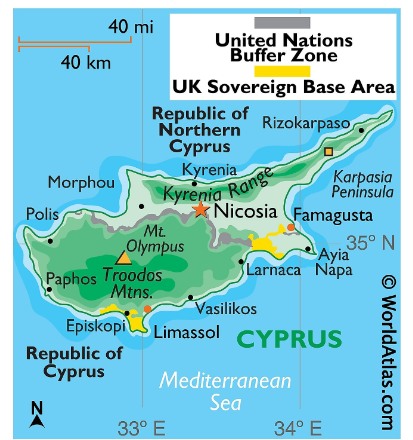
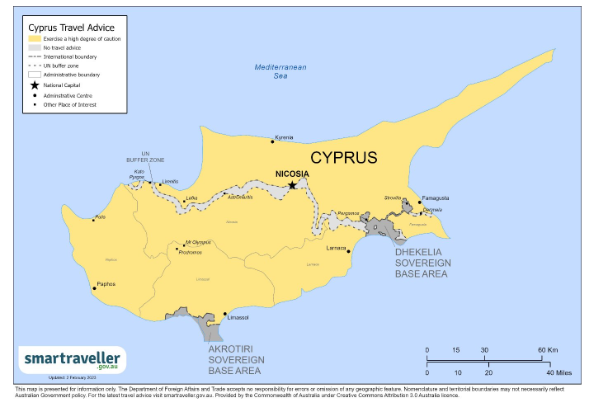

Philippines - Edukemy Current Affairs
In News: A strong earthquake of magnitude 7.6 sparked a Tsunami warning in the Philippines.
Thing to remember
- It is situated in the western Pacific Ocean, and consists of about 7,640 islands.
- The islands that are broadly categorized under three main geographical divisions from north to south: Luzon, Visayas, and Mindanao.
- Manila is the nation's capital, while the largest city is Quezon City.
- It is bordered by the Philippine Sea to the east, the South China Sea to the west,and the Celebes Sea to the south. The island of Borneo is located a few hundred kilometers southwest, and Taiwan is located directly to the north. Sulawesi is located to the southwest and Palau is located to the east of the islands.
- The highest mountain is Mount Apo. The longest river is the Cagayan River in northern Luzon.
- The Puerto Princesa Subterranean River here is a UNESCO World Heritage Site.
- There are many active volcanoes such as the Mayon Volcano, Mount Pinatubo, and Taal Volcano.
- The Philippines is the world's second-biggest geothermal energy producer behind the United States.
- The Philippines is a megadiverse country. It has a tropical maritime climate that is usually hot and humid.
- Bilateral Trade As per the official trade figures of Department of Commerce, GOI, bilateral trade between India and Philippines (in terms of value) increased from USD 1.89 billion in 2015-16 to USD 3.05 billion in 2022-23, crossing USD 3 billion mark for the first time.
- The major items of export from India to Philippines include engineering goods; automobiles part and accessories, transmission apparatus, electric transformers, petroleum products, semi-finished products of iron and steel; drugs and pharmaceuticals, organic and inorganic chemicals; electronic goods; plastic and linoleum: rice; bovine meat, oil seeds; tobacco; groundnuts and others. Philippines account for around 20% of total Indian pharma exports to the ASEAN region.
- The major items of import from Philippines include Electrical machinery; semiconductors; ores, slag and ashes; copper, lead; plastics; pearls and precious stones; residue and waste from food industry; animal fodder and others.
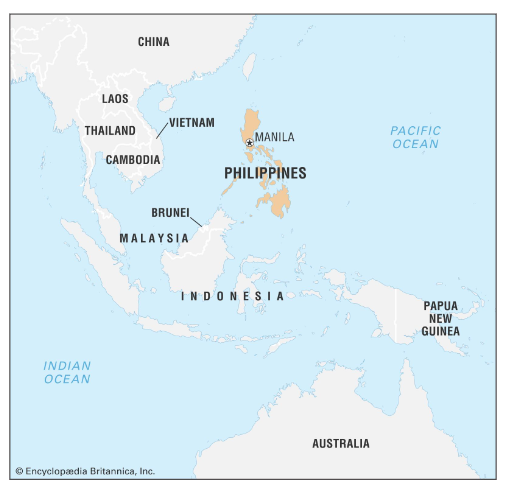


Papua New Guinea - Edukemy Current Affairs
In News: 1-million-dollar relief assistance announced by India for the people of New Guinea affected due to volcanic eruption at mount Ulawun.
Things to remember
- Mount Ulawun.
- Mount Manam
- Port Moresby
- Kimbe
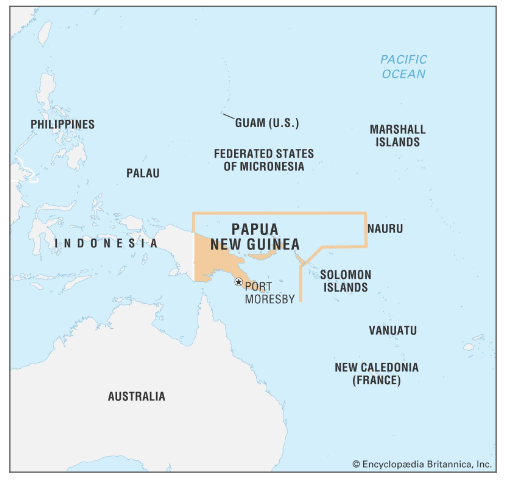
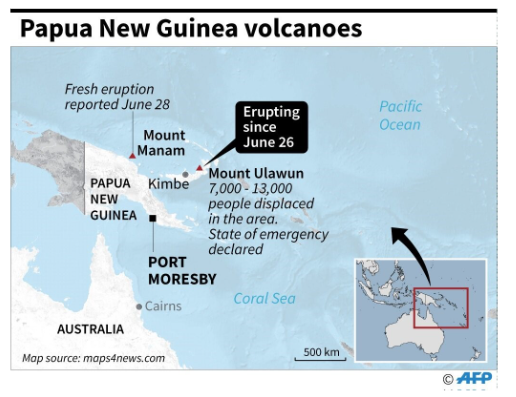
Seychelles - Edukemy Current Affairs
In News: Declared state of emergency after explosion amid flooding.
In 1976, Seychelles gained independence from the United Kingdom and became a republic. It has since become a member of the Commonwealth.
Inaugurated the new magistrates’ court building in Mahé , a 1 MW solar power plant built at a cost of USD3.4 million, and 10 community development projects in Seychelles.
India handed over a fast patrol vessel (PS Zoroaster) to the island nation.
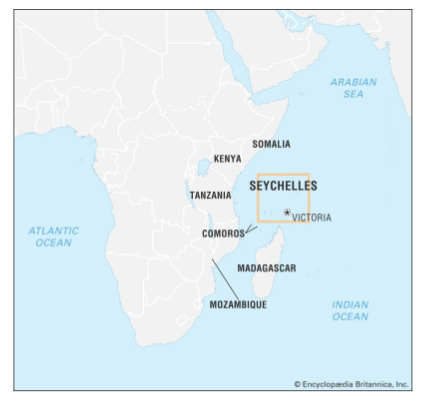

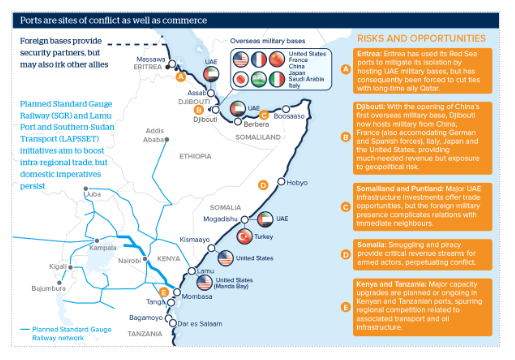
Malta
In News: Indian Navy extended helps to MV Ruen a ship of Malta hijacked in the Arabian Sea.

Antarctica
In News: India celebrated 40th years of its permanent residence in Antarctica. In December 1983, India established its first permanent base in Antarctica, Dakshin Gangotri, during the Project Gangotri mission.
- Dakshin Gangotri (abandoned in 1990)
- Maitri (operational since 1988)
- Bharati (operational since 2012)
- National Centre for Polar and Ocean Research, Goa-an autonomous institute under the Ministry of Earth Sciences (it manages India’s Antarctic program)
- India is a party to the Antarctic Treaty, which seeks it shall be used for peaceful purposes only.
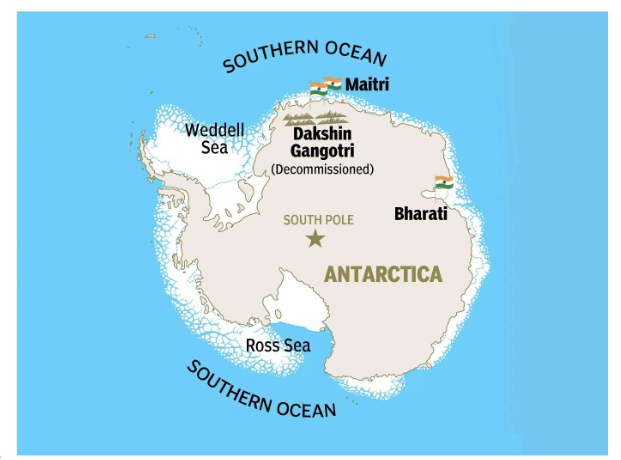
- Indian Antarctic Act, 2022, provides measures for protecting the Antarctic environment and associated ecosystems etc.
Arctic
In News: Ministry of earth sciences launched India’s first winter scientific expedition to Arctic
- Indian scientific expeditions to the Arctic during the winter (November to March) will allow researchers to conduct unique scientific observations during polar nights, where there is no sunlight for nearly 24 hours and sub-zero temperatures (as low as -15 degrees Celsius).
- This will aid in expanding understanding of the Arctic, especially climate change, space weather, sea-ice and ocean circulation dynamics, ecosystem adaptations, etc., which affect weather and climate in the tropics, including monsoons.
- Since 2008, India operates a research base in the Arctic named Himadri, which has been mostly hosting scientists during the summer (April to October).
- ndian scientific expeditions to the Earth’s poles (the Arctic and the Antarctic) are facilitated under the PACER (Polar and Cryosphere) scheme of the MoES, solely through the aegis of the National Centre for Polar and Ocean Research (NCPOR), Goa, an autonomous institution of the MoES.


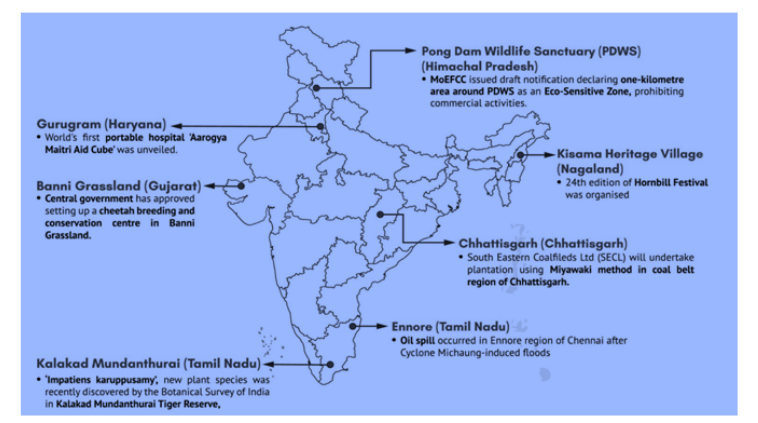 India Location in News:
India Location in News:
Share the article
Get Latest Updates on Offers, Event dates, and free Mentorship sessions.

Get in touch with our Expert Academic Counsellors 👋
Frequently Asked Questions
UPSC Monthly Current Affairs refers to a compilation of relevant and significant news, events, and developments from various fields that are important for the UPSC (Union Public Service Commission) civil services examination. This curated collection helps aspirants stay updated with recent happenings, enhancing their knowledge and analytical skills, which are crucial for various stages of the UPSC exam, including the Preliminary, Main, and Interview rounds.
UPSC Monthly Current Affairs plays a crucial role in UPSC preparation as it helps aspirants cover a broader range of current affairs topics within a specific time frame. By reviewing monthly current affairs, aspirants can gain a deeper understanding of significant events and issues, analyze their implications, and connect them with the UPSC syllabus. It aids in building a holistic perspective and enhances the ability to answer questions effectively.
UPSC Monthly Current Affairs provides a comprehensive overview of important events and developments across various domains. It covers national and international news, government policies, economic updates, scientific advancements, environmental issues, social issues, sports events, cultural festivals, and more. The content typically includes summaries, analysis, infographics, and practice questions to facilitate effective learning and revision.
You can access UPSC Monthly Current Affairs through various sources and platforms:
- Online Education Websites: Websites like Edukemy, Unacademy, BYJU'S, and others often provide monthly current affairs compilations tailored specifically for UPSC aspirants.
- Newspapers and Magazines: Reputed newspapers like The Hindu, The Indian Express, and magazines like Yojana and Kurukshetra provide comprehensive coverage of current affairs. Many coaching institutes also compile and publish monthly magazines focusing on UPSC-related current affairs.
- Mobile Apps: There are dedicated mobile apps that are available on platforms like Google Play Store and Apple App Store that provide UPSC-focused current affairs content. Edukemy's app is the best in the industry for current affairs preparation.
- YouTube Channels and Podcasts: Many educators and institutes have YouTube channels and podcasts that discuss and analyze current affairs topics relevant to the UPSC exam. Visit Edukemy's YouTube channel and get covered with all the current affairs required for UPSC preparation.
- Coaching Institutes: Many offline and online coaching institutes like Edukemy offer UPSC Monthly Current Affairs as part of their study materials or subscription plans.
When accessing UPSC Monthly Current Affairs, ensure that the content is reliable, well-researched, and covers a wide range of topics relevant to the UPSC syllabus. It's essential to stay updated with national and international developments, government policies, socio-economic issues, and more to excel in the UPSC exam.


